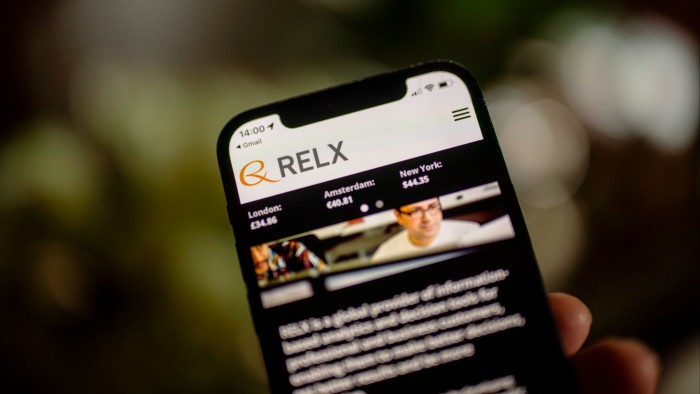Stay informed with free updates
Simply sign up to the Technology sector myFT Digest — delivered directly to your inbox.
We are now familiar with that brief pause after pressing a keyboard enter key or clicking a mouse to make a financial transaction. Somewhere in the background, an algorithm reaches a snap risk judgment and the money is either transferred or there are more checks to follow.
The ritual has become faster and smoother, providing there is nothing wrong. The automated process of a bank or insurance company verifying our identities, or checking that we are not lying about something on an application, intrudes less. A screen flickers and the workflow flows on.
Identity verification and fraud detection grease the wheels of ecommerce and have become big business in their own right: billions of transactions are approved or rejected each year. Proof of this lies in the FTSE 100 index, where Relx started this week as the UK’s fifth most valuable company, just above BP. Data really is the new oil.
Relx is the weird name that the former Reed Elsevier adopted nearly a decade ago. But the x in Relx is not merely a corporate branding firm’s verbal nonsense. It denotes LexisNexis, the online data business that has grown inexorably in scale and scope. Having started by putting Ohio’s statutes online in 1967, it has become the financial guardian of many mobile phones.
The story of Relx’s digital transformation from its Anglo-Dutch roots in business magazines and scientific publishing is familiar. It has ascended the FTSE 100 under Erik Engstrom, the low-profile Swede who has been chief executive since 2009. Most of its activity is now online rather than in print, and its recurring subscriptions churn out cash for faithful investors.
But while it is known for science in the Elsevier name and legal information under LexisNexis, its biggest division does something else entirely. LexisNexis Risk Solutions, as it is blandly called, contributes about 35 per cent of revenues and is much larger than the legal operations. There is a lot of money in answering the question, “Are you who you say you are?”
This is mostly done rapidly and silently, as devices are checked and users’ identities and financial declarations pass through databases to be checked for breaches. Occasionally, it surfaces publicly. “When we lose contact, we work with LexisNexis Risk Solutions to help us find you again,” Royal London, the UK insurer, tells those customers who have received an unexpected letter.
Relx’s risk division is not the only provider of identity verification and analytics: from Experian and Verisk Analytics in the US to GB Group in the UK, the list of global contenders is long. But it has grown to its present size through acquisitions that were mostly too small to attract attention, adding more grist to a data mill that is managed by 3,000 software engineers and artificial intelligence specialists.
US auto insurance is one of its largest markets. Insurers run applications for new policies through its software to match personal identities with state records, bankruptcy court data, driving violations and so on. A lot of the information is public, but this is integrated with proprietary data and analytics to reduce insurers’ losses by tracing personal histories, warts and all.
Relx expanded in banking in 2018 by buying ThreatMetrix, a Silicon Valley firm that links online identities to digital devices, checking for signs that a computer or phone is being used for fraud. A phone might be in a suspicious location or at an unusual altitude. The user may be striking the keys harder or faster than its owner usually does. All this can be observed remotely.
The risk division now holds 290mn US unique identities, 13bn names and addresses, 8bn vehicle records, 9bn device records, and 3bn digital identities. That is a lot of data, never mind the 16bn keyboard, mouse, sensor and touch transactions that it processes annually. About 80 per cent of its revenues come from the US, where privacy laws are looser than in Europe.
One reason that the business of identity keeps on expanding, and has become so profitable for Relx and its investors, is that it demonstrably works. An insurer or bank can calculate whether these checks reduce fraud sufficiently to justify the fees by switching the technology on and off. There is enough crime for it to pay.
Engstrom deserves part of the credit for increasing the size of the x in Relx, but not all. Its early advances into identity data came under his prescient predecessor Sir Crispin Davis. The result is a business that grows more valuable the less that it is noticed. Follow the money and it leads to your phone.
john.gapper@ft.com
https://www.ft.com/content/4c206920-405f-430b-87f2-dde0f68bfccb


